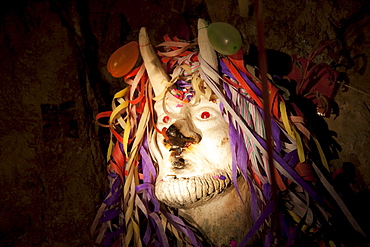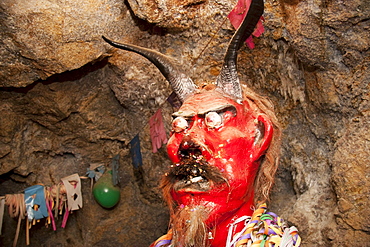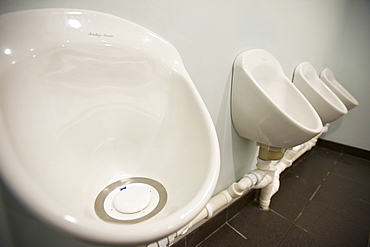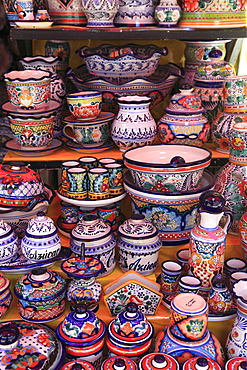Recent searches
Loading...
832-101927 - Typical ceramic roof shingles, Hoi An, Vietnam, Southeast Asia
832-105984 - Typical blue Azulejo with historical motif in the historic town of Faro, Algarve, Portugal, Europe
832-105993 - Typical blue Azulejo on the facade of the famous church Igreja de Sao Lourenco de Matos in Almancil, Algarve, Portugal, Europe
832-103680 - Ceramic pottery near Crestet, Provence, southern France, Europe
832-105992 - Typical blue Azulejo on the facade of the famous church Igreja de Sao Lourenco de Matos in Almancil, Algarve, Portugal, Europe
1109-387 - Ceramics for sale, Essaouira, formerly Mogador, Morocco, North Africa, Africa
832-112435 - Fortress da Ponta da Bandeira, typical Portugese chapel decorated with ceramic tiles in the Fortaleza da Ponta da Bandeira, with the patron saint, Santa Barbara, Lagos, Algarve, Portugal, Europe
832-101928 - Typical ceramic roof shingles, Hoi An, Vietnam, Southeast Asia
832-112794 - Tiled stove, Schloss Callenberg palace, hunting lodge and summer residence of the Dukes of Saxe-Coburg and Gotha, Coburg, Upper Franconia, Bavaria, Germany, Europe
832-97920 - Ceramic carnival masks, Venice, Venezia, Veneto, Italy, Europe
832-88074 - Ceramic carnival masks, Venice, Venezia, Veneto, Italy, Europe
832-62275 - Pottery, ceramic pots on the market in Houmt Souk on Djerba Island, Tunisia, North Africa, Northern Africa, Africa
832-74443 - Ceramic tiles, Casa Don Bosco, Ronda, Malaga Province, Andalusia, Spain, Europe
832-74442 - Ceramic tile mural of Ronda, Ronda, Malaga Province, Andalusia, Spain, Europe
832-80434 - Tile mosaic "Casita Blanca", White House, on a facade, Calpe, Costa Blanca, Spain, Europe
832-80432 - Mosaic wall with the landmark rock Penon de Ifach, port of Calpe, Costa Blanca, Spain, Europe
832-70219 - Calle de Arenal, street sign, azulejos, Spanish tiles, historic centre of Madrid, Spain, Europe
1113-90781 - Ceramic benches by the water stairs, Firgas, Gran Canaria, Canary Islands, Spain
832-74069 - Allegory of the physical culture, ceramic sculpture at the Karl-Marx-Hof courtyard, Vienna's most famous municipal tenement complex from the interwar period, Doebling, Vienna, Austria, Europe
832-62181 - Pottery, the main local craft in desert areas, Jaisalmer, Rajasthan, India, Asia
832-62180 - Pottery, the main local craft in desert areas, Jaisalmer, Rajasthan, India, Asia
832-62276 - Pottery, ceramic pots on the market in Houmt Souk on Djerba Island, Tunisia, North Africa, Northern Africa, Africa
832-61415 - Wave-shaped bank with ceramic mosaics by Josep Maria Jujol, La Placa, Park Gueell, designed by Antoni Gaudi, UNESCO World Cultural Heritage Site, Barcelona, Catalonia, Spain, Europe
832-61416 - Wave-shaped bank with ceramic mosaics by Josep Maria Jujol, La Placa, Park Gueell, designed by Antoni Gaudi, UNESCO World Cultural Heritage Site, Barcelona, Catalonia, Spain, Europe
832-55291 - Holy picture made of tiles, basilica, Valencia, Spain, Europe
832-48383 - Colourful ceramic buttons and pendants, Auer Dult market, Munich, Bavaria, Germany, Europe
832-51045 - Traditional tajines or tagines, souvenirs, market stall, Ait Benhaddou, Morocco, Africa
832-51742 - Azulejos, Cascais Town Hall, Lisbon Coast, Portugal, Europe
832-51249 - Road sign, azulejos, Cascais, Lisbon, Portugal, Europe
832-42861 - Azulejos, tiles, at the Pavilhao Desportivo Carlos Lopes, Parque Eduardo VII, Lisbon, Portugal, Europe
832-47759 - Azulejos, tiles, in the town of Tavira, eastern Algarve, Portugal, Europe
832-42044 - Azulejos, Nossa Senhora dos Remedios Church, Lamego, Tras-Os-Montes, Portugal, Europe
832-41980 - Azulejos, Evora Jesuit University, Evora, Unesco World Heritage Site, Alentejo, Portugal, Europe
832-42860 - Azulejos, tiles, at the Pavilhao Desportivo Carlos Lopes, Parque Eduardo VII, Lisbon, Portugal, Europe
832-42012 - Azulejos on the wall of Pinhao Railway station, Tras-Os-Montes, Portugal, Europe
665-5287 - Ceramic decor columns, Plaza de Espana, Seville, Andalusia, Spain, Europe
665-5290 - Ceramic frog spitting out water, Frogs Fountain, Maria Luisa Park, Seville, Andalusia, Spain, Europe
665-5286 - Ceramic decor columns, Plaza de Espana, Seville, Andalusia, Spain, Europe
1113-67810 - Sex art museum, tourist tunnel, sex art, images, china, ceramic, history of the art of sex
1113-51066 - Ceramics shop with danish ensign, Svaneke, Bornholm, Denmark, Europe
1113-36100 - Pottery, Santa Maria, Salina Island, Aeolian islands, Sicily, Italy
1113-35995 - Women painting pottery, Caltegirone, Sicily, Italy
1113-35996 - Women painting pottery, Caltegirone, Sicily, Italy
1113-35994 - Pottery stairs, Caltegirone, Sicily, Italy
797-10528 - Mexico, Anahuac, Teotihuacan, Anthropomorphic ceramic representation in the site museum.
797-10530 - Mexico, Anahuac, Teotihuacan, Anthropomorphic head ceramic representation on display in site museum.
797-10306 - Mexico, Puebla, Talavera ceramic artist at Armando Gallery applying blue detail to raised design on teapot.
797-10283 - Mexico, Bajio, Queretaro, Blue white and yellow talavera tile detail.
797-10490 - Mexico, Federal District, Mexico City, Museo Nacional de Antropologia Painted hummingbird goblet 800-1521 AD.
797-10489 - Mexico, Federal District, Mexico City, Museo Nacional de Antropologia Painted Mixteca ceramic jug from Oaxaca in Ancient Mexico.
797-10529 - Mexico, Anahuac, Teotihuacan, Anthropomorphic ceramic representation on display in the site Museum.
797-10307 - Mexico, Puebla, Talavera ceramic tiles at Armando Gallery.
797-10766 - Vietnam, Hue, Ceramic mosaic on a wall at the tomb of Emperor Tu Duc.
797-10532 - Mexico, Anahuac, Teotihuacan, Detail of architectural crenellation representing a bird on display in the site Museum.
797-10449 - Mexico, Oaxaca, Detail of ceramic pot depicting spotted big cat in black and yellow.
797-10312 - Mexico, Puebla, Cholula, Cholula site museum Ceramic plate from the Cholulteca 3rd Phase A.D. 1325-1500.
797-10305 - Mexico, Puebla, Talavera ceramic artist at Armando Gallery.
1113-26810 - Advertising for wine, ceramic figure and a sign on a wall, Siena, Tuscany, Italy, Europe
1113-27269 - Azulejo, painted, tin-glazed ceramic tilework, Albufeira, Algarve, Portugal, Europe
1113-13084 - Potter engraving a bowl, ceramic, pottery, workshop, Ramon Barreto Leal, Ceramica El Molino, Hoyo de Mazo, Villa de Mazo, La Palma, Canary Islands, Spain, Europe
1113-12752 - Ceramic tile with Saint Catalina on a wall at Valldemossa, Tramuntana Mountains, Mallorca, Balearic Islands, Spain, Europe
1113-11076 - Colourful bags and ceramics in front of a souvenir shop, Gordes, Vaucluse, Provence, France, Europe
724-2379 - Potter in Nwe Nyein, a pottery town along the Irrawaddy river, Mandalay Division, Republic of the Union of Myanmar (Burma), Asia
724-2380 - Potter in Nwe Nyein, a pottery town along the Irrawaddy river, Mandalay Division, Republic of the Union of Myanmar (Burma), Asia
1116-33745 - Nepal, Bhaktapur, Potter's Square, vases of various sizes lined up in rows, view from above.
1116-30389 - Close up of geisha pouring tea at tea ceremony.
1116-37220 - Studio shot of a bowl of Japanese Ramen with chopsticks on a napkin next to it.
1116-33994 - Thailand, Bangkok, outdoor market selling colorful handmade pottery
1116-25172 - Ceramic figure of el Tio or Supai, a creature with horns, gleaming eyes and a big penis, that in fact is not really satanic. It was introduced by the Spaniards in the 16th Century to the mines of Potosi. According to tradition, el Tio (The Uncle) rules over the mines of Cerro Rico, simultaneously offering protection and destruction. Over 500 chambers with statues to honour him have been constructed in Cerro Rico, so miners can leave offerings of tobacco, liquor and coca leaves to invoke his goodwill and protection., Potosi Department, Bolivia
1116-25174 - Ceramic figure of el Tio or Supai, a creature with horns, gleaming eyes and a big penis, that in fact is not really satanic. It was introduced by the Spaniards in the 16th Century to the mines of Potosi. According to tradition, el Tio (The Uncle) rules over the mines of Cerro Rico, simultaneously offering protection and destruction. Over 500 chambers with statues to honour him have been constructed in Cerro Rico, so miners can leave offerings of tobacco, liquor and coca leaves to invoke his goodwill and protection., Potosi Department, Bolivia
1116-25173 - Ceramic figure of el Tio or Supai, a creature with horns, gleaming eyes and a big penis, that in fact is not really satanic. It was introduced by the Spaniards in the 16th Century to the mines of Potosi. According to tradition, el Tio (The Uncle) rules over the mines of Cerro Rico, simultaneously offering protection and destruction. Over 500 chambers with statues to honour him have been constructed in Cerro Rico, so miners can leave offerings of tobacco, liquor and coca leaves to invoke his goodwill and protection., Potosi Department, Bolivia
1116-8653 - Palacio Brunet, Now The Museo Romantico; Trinidad, Cuba
1113-2693 - Pottery and ceramics, antique dealer, Kyrenia, Girne, North Cyprus, Cyprus
857-62819 - Floral & geometric patterns of restored Timurid tile mosaics decorate a wall in the courtyard of the Friday Mosque or "Masjid-i Jami", the largest mosque in Herat, dating to 1200 AD, Herat, Afghanistan. Much of the Ghorid and Timurid decorations on the mosque had been badly damaged during the centuries, but a restoration project begun in 1943 continues today.
857-48641 - Workers making ceramics with foot powered wheel in Hoi An, Vietnam
749-1398 - Craft market near Sao Francisco de Assis church, Ouro Preto, Minas Gerais, Brazil, South America
857-32595 - A Rajasthani woman with a burqua (veil) covering her face walks toard the village well with her young son on her hip. In Rajasthani tradition she carries her ceramic water pot balanced on her head.
800-1020 - Ceramic pot at market, Ouro Preto, UNESCO World Heritage Site, Minas Gerais, Brazil, South America
797-9771 - Hungary, Budapest, Buda Castle District, the tiled Bela tower with Matyas Church behind.
1194-180 - TURKEY Mosque of Rustem Pasha, Istanbul. Detail of Iznik tile
1196-135 - Skalzang Norbu, 69, hand-builds "bumpa", or ritual vases, outside his home in Likir. Ladakh, India
1196-92 - Skalzang Norbu, 69, handbuilds a bumpa, or ritual vase that may be placed within a lukang or foundation of a house. Ladakh, India
1109-320 - Toxic sulphur fumes escaping from the ceramic pipes at Kawah Ijen, Java, Indonesia, Southeast Asia, Asia
911-8032 - Tagines on a stand at a souk in Marrakech, Morocco, North Africa, Africa
921-533 - 04/04/2009. Plaza Del Ayuntamiento (world heritage site) of La Orotava on Tenerife Island, Canary islands, flowers, town square. Santa Cruz, Tenerife Island. Canary Islands
911-3653 - Cleaning a household domestic toilet with a toilet cleaning brush
911-3652 - Cleaning a household domestic toilet with a toilet cleaning brush
920-969 - House with typical Portuguese tiles, Cananeia, Sao Paulo, Brazil, South America
911-4299 - Plant pots at a garden centre in Lincoln, Lincolnshire, England, United Kingdom, Europe
911-1595 - Water free urinals in a gents toilet for saving water
911-1596 - Water free urinals in a gents toilet for saving water
807-1134 - Talavera Pottery, El Parian Market, Puebla, Historic Center, Puebla State, Mexico, North America
807-1119 - Talavera pottery, Puebla, Historic Center, Puebla State, Mexico, North America
808-662 - Vintage Communist ceramics for sale in Hollywood Road antiques district, Hong Kong Island, Hong Kong, China, Asia
844-567 - Stall at Christmas Market, Birmingham, West Midlands, England, United Kingdom, Europe
834-1317 - Flooring Decoration of the Ceramic Staircase by Francis Wollaston Thomas, Victoria and Albert Museum, London, England, United Kingdom, Europe
834-2293 - Ceramic crockery display, Grand Bazaar, Sultanahmet, Istanbul, Turkey, Europe
834-1316 - Ceiling decoration of the Ceramic Staircase by Francis Wollaston Thomas, Victoria and Albert Museum, London, England, United Kingdom, Europe



































































































